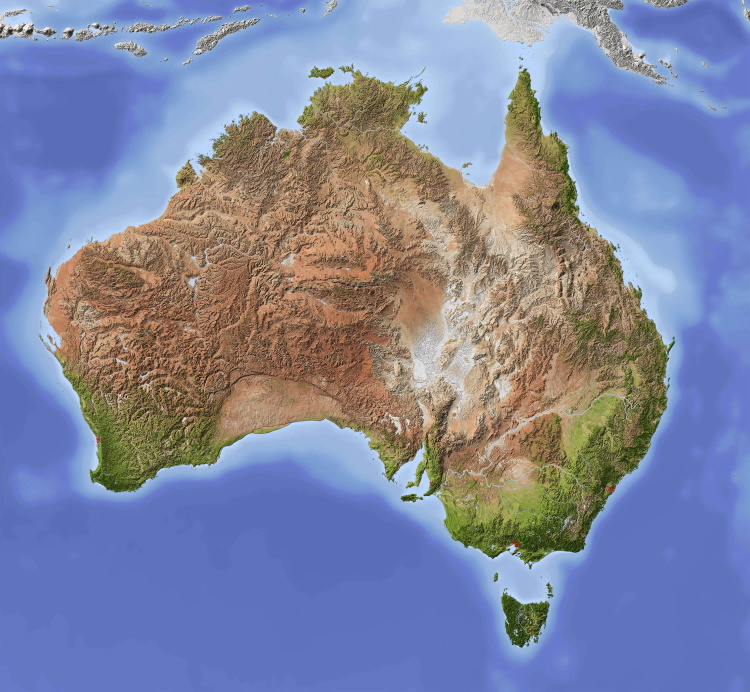“We also allege that in many cases both Woolworths and Coles had already planned to later place the products on a “prices dropped” or “down down” promotion before the price spike, and implemented the temporary price spike for the purpose of establishing a higher “was” price.
Ooh boy they’re gonna get such a slap on the wrist they’ll think about doing it again.
The courts have the lettuce ready to gooooo!
ACCC finally doing it’s fucking job? What’s next, looking at petrol station price gouging every Friday before a long weekend?
The NT government announced an enquiry into the fuel price a few years ago and almost over night our fuel price fell mostly in line with the rest of Australia.
https://www.abc.net.au/news/2022-08-10/northern-territory-gouged-by-high-petrol-prices/101315636
They are trying to blame “inflation”, but at the same time they are reporting record profits.
The dumb thing is that inflation is measured by the increase in colesworth prices.
Greedy capitalists are conflating themselves while lying? Nooo! //S
Isn’t that the same thing though? If inflation is at record high, their equivalent profits in dollars will be up because money is now worth less
Profits have increased as a percentage of revenue (i.e. profit margins have increased).
Profit goes brrrrrr
Let’s start a non profit supermarket chain
A cooperative is one way to start on that: https://www.abc.net.au/news/2024-07-10/supermarket-alternative-co-ops-save-money/104078660
Their definition sounds like too much work, would be better to pay someone to do the work
I get the joke, but actually…yes. A co-op doesn’t mean the people actually doing the work don’t get paid. It actually doesn’t even mean not-for-profit, just that the people profiting aren’t shareholders, but people who actually have a direct stake in the business. That can be a customer-owned co-op, supplier-owned, worker-owned, or some combination of those. Those groups would be the ones making any profit, in a for-profit co-op. And in a not-for-profit worker- or supplier-owned co-op, the workers (including the CEO) and suppliers still get paid—they’re just able to be paid more while selling goods for the same price, or paid the same while achieving a lower price, than a non-co-op business would.
I wonder what slap on the wrist they might get?
Fool me once, shame on me. Fool me twice, shame on you. Another reminder to give the big chains the flick where possible.
The smaller guys need to do a better job at providing a good service though, too. Small local grocery stores have had scan & go options for half a decade overseas, something that Woolies only started rolling out last year, and no other store in Australia has, to my knowledge. The big guys also have options like regular self-checkout, checking prices & stock online/in-app, and direct-to-boot ordering. These are all things that smaller guys could reasonably fix, to varying degrees
Much harder for the small guys to fix is the fact that Colesworth are more likely to be a one-stop-shop place. They’re huge, and with that comes a huge range of stock. Supporting your local grocer is fine, but might then mean you have to make a separate trip to a baker and butcher. Given these less-easily-surmountable drawback, it just becomes extra important that they don’t fall behind in things they can control. But they do.
Disagree.
It might seem like some of these technical implementations are easy, but in many cases it’s not practically possible. The IGA down the road had self checkout but no one ever used them because they would call the operator after almost every item. Recently they just got rid of them and replaced them with old fashioned checkouts.
I’m struggling to remember a time when I’ve wanted to look at a price for a grocery item online. I’ve never done direct to boot.
I don’t really think these technical services are the right way for smaller vendors to compete with Colesworth. It’s just too expensive to create a comparable ux. They’re better off focusing on local products or speciality lines.
I’m struggling to remember a time when I’ve wanted to look at a price for a grocery item online. I’ve never done direct to boot.
Ok, that’s fantastic for you. I love direct to boot, and I specifically avoid my local IGA because even though they do have self checkout (only installed around the last year or so), it always seems to be roped off when I go. Not sure if that’s just because I only tend to go late at night when they have the fewest people rostered on. I don’t actually care about checking the prices online because I’m financially secure enough that I’m lucky enough not to actually care but if I did care a lot about the price, I would definitely be wanting to be able to check where I’m going to get the best deal. But I do like being able to check which products they’ve got so I can plan my shop. This is especially important for smaller stores where I might need to plan to go to a bunch of different stores to get all the stuff I need.
Maybe I’m wrong and this wouldn’t actually help them. But it’s clear that people aren’t convinced by them doing what they currently do, and that they need to try something new. Maybe getting speciality lines could work, like Aldi does with their centre aisle, which clearly works very well for them. But “focusing on local products” has been the primary selling point of smaller supermarkets and independent grocers for decades, and clearly does not work.
As for it being “too expensive”, if companies in countries that have a smaller population than ours and lack the strong duopoly of Colesworths can develop or purchase scan & go tech 3 or 4 years before Woolworths started doing it here, I refuse to believe that’s actually the real problem. I suspect smaller business owners in Australia are just more likely to be technophobic and to believe that it’s sound business to ignore technology than small companies in Europe.
So, I wanted to find a good source for this, but i can’t after a short search and its late, so i’m just going to reply.
but if I did care a lot about the price, I would definitely be wanting to be able to check where I’m going to get the best deal. But I do like being able to check which products they’ve got so I can plan my shop
Prices and range of stock are likely controlled by IGA store owners themselves, this is not Metcash.
Metcash own the brand and do the majority of wholesaling for IGA. I think theres extras, like locally sourced produce, that independent IGA brand operators sell themselves without violating terms of the IGA brand agreement.
Due to the owner/operators of IGA stores having more price and stock control this makes it harder for things like online pricing and stocking, as each store is doing its own thing supplying their local area the way they think.
Like Mcdonalds franchisees the catalogues you get with those prices require the ongoing agreement of the IGA stores themselves.
A central data collection point is more complicated for Metcash/IGA than a single entity like ColesWortAldi. Each owner/operator needs to agree/supply a price and stock level, supply their information back likely working off multiple types of in-house operational systems across the IGA stores (also stock numbers, etc), then receive reflect and display the equivalent information as everyone else.
Its actually not dissimilar to Lemmy and its many servers.
All this said, your point about technophobia is probably very true, sometimes its straight up head in the sand, but also a key issue is these owner/operators run on tiny margins. Significant upfront costs, like built/hard tech often has, with obscure pay offs are a hard sell in these people’s positions, and the stores owners themselves need to put their hands in their own pockets more often than not.
Add to this that the borrowing capacity of an organisation like Metcash/IGA is a lot lower than the ‘single entity operators’ and you get a less competitive and slower moving beast.
Bonus though, the money you spend at an IGA is going to take a lot longer, if ever, to become leakage to some overseas investor, so a good argument for IGA’s is they increase the velocity of money swirling around in the Australian economy whereas others, Costco/Aldi particularly, cause AUD leakage quicker.
It might be a bit more difficult for them than for Woolies and Coles, sure. But Australia is unique in how strong Colesworths are, and yet in other countries, as demonstrated in the video linked above, stores are able to have scan & go tech.
Granted, there are a whole bunch of other factors in the Australian market that make it way worse than it needs to be, like our restrictive zoning practices that promote driving to big supermarkets rather than stopping off at your local small store on the ride home or walk back from the train/tram/bus stop. But the bottom line in terms of their inability to provide customer conveniences is that if stores in a country that is both less centralised and lower population can do it, there’s really no excuse here. Pubs and clubs have gotten on board with it via the prevalence of QR codes to order food, despite menus being unique to every place. Maccas manages to have a pretty damn good app experience despite prices and menus varying somewhat between stores and being largely franchise-owned.
They don’t need to spend millions developing this for themselves. A quick search turns up numerous different while-label services that can do this for you. I don’t know exactly how much they cost or how hard they are to integrate, but I know I would be way more likely to go to somewhere other than Colesworth if the experience didn’t suck arse. Last time I went to my local local store (there’s also an IGA pretty nearby that I do visit from time-to-time, but this was a fully independent local grocer) they refused to check me out at all because I didn’t have cash, and they only accepted cash for small purchases.
Your last paragraph is a good point, and is yet another reason that the government should structure its laws and enforcement to help promote these smaller businesses rather than CostlesWorthdi. But I think it’s unlikely to sway very many shoppers.
Went back and watched that video, love ‘not just bikes’, those instore scanners are a really good idea, Costlesworthdi should have all employed these by now.
The only reason i can think they haven’t is the same reason i’d assume for independents and IGA’s the cost. Without knowing anymore about the costs, i’d assume its a mix of upfront payments for the scanners, etc, and a, out of proportion, per transaction clip of the ticket for ‘maintenance and service costs’, just like the bank cards have.
I love what you’re suggesting though, use QR codes on each product so customers use the hardware in their pockets to scan out their items as they go.
It would reduce those upfront costs so much, and could be done with less memory bloat like the Maccas type apps. If this doesn’t already exist we should round up some of the more tech focused users/mods/admins on aussiezone and do it ourselves, then use the revenue from that as an ongoing fund for the benefit of ‘aussiezone’ as Australia’s Social Web alternative. Lets do this!
use QR codes on each product
Pssst… products all already have scannable codes on them.
But yeah, Woolies rolled this out in a few of their stores last year. No need for dedicated hardware, the Woolies app does it. It took me a while to realise that actually it’s not yet available in very many stores. Just 16 in Qld, 20 in Vic, 32 in NSW, and 13 in the rest of the country combined. It just so happens that the two nearest to me are both on that list, so I got the impression that it was more common than it actually is.
But yeah, the tech does already exist as a whitelabel service. If I had to guess, I’d say Woolies rolled their own rather than using one of these, but other companies could do it without needing to do all the work themselves.
Good lord.
The junk at Aldi isn’t “speciality products” LOL.
You’re dealing in generalisations, and assumptions based on your own preferences.
Maybe start by assuming that the people that own small grocers know more about the industry and how to compete than you do.
Sorry, I thought we were having a civilised conversation about how a known problem could be solved. Not being rude arseholes slinging insults at each other and using the tired right-wing “ignore evidence from elsewhere in the world because we’re special” bullshit as justification.
Ignoramus!
The IGA down the road had self checkout but no one ever used them because they would call the operator after almost every item. Recently they just got rid of them and replaced them with old fashioned checkouts.
Actually something similar happened at one of my local Drakes Mini stores. I was wondering why they put these machines in and then removed them within a year, maybe it was staffing related like in your case?
It’s a pity the small chains do exactly the same shit.
My local supermarket (formerly an IGA, now Drake’s) recently did that with an item I buy regularly. Bumped the price up from $26 to $45, only to have it ‘on sale’ a week later for $28. Wouldn’t be surprised if that’s the only instance.
The funny thing is that I could have probably lived with the direct price increase, but that doesn’t sell as well to the people who aren’t paying attention. All they see is the ‘price drop’ sticker.
It is critical that Australian consumers are able to rely on the accuracy of pricing and discount claims.
It’s almost like we as a society shouldn’t trust corporations to be honest, and should instead expect constant greed and ratfuckery, and opt for implementing continuous, real-time, transparent, and open data capture to mitigate these problems.
We already do this with energy regulators. Why don’t we do it for all big businesses? They can’t claim this to be expensive, because they already price everything digitally; it’d just be about enabling the regulator to view and capture it.









